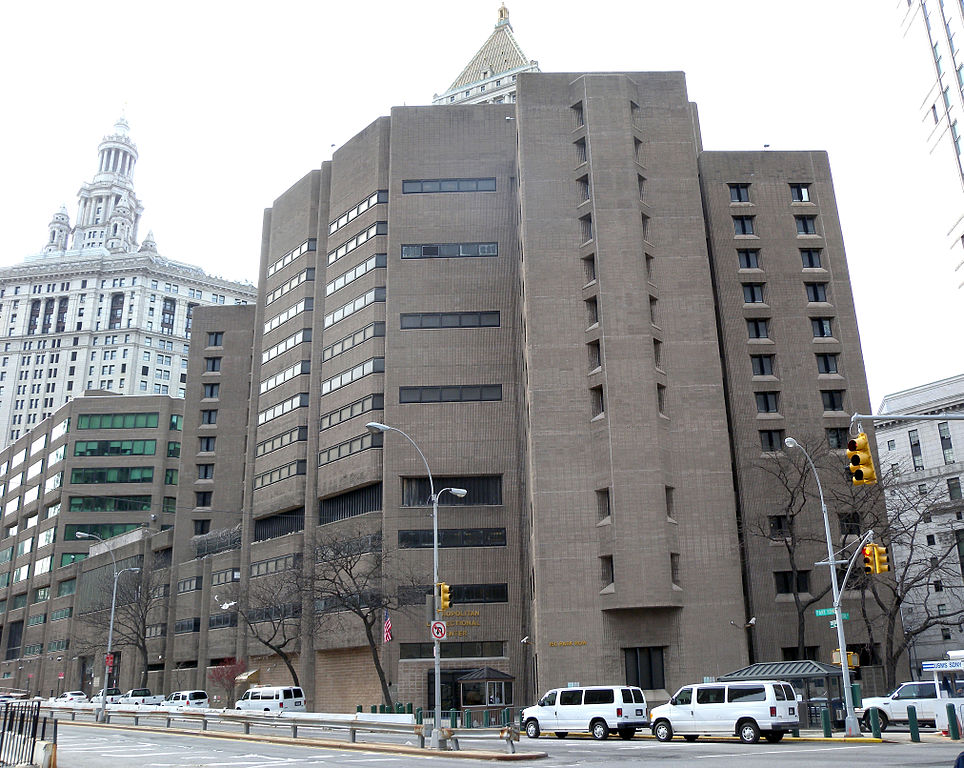
Editors’ note: If you or a loved one is in distress, you can call 1-800-273-8255 (1-800-273-TALK).
By Max Blau, Stateline
ATLANTA — One afternoon in August, six days after Jeffrey Epstein died by suicide in a Manhattan jail cell, Christi Phillips received a troubling message. Her husband, Mike, who is serving time at a state prison in Valdosta, Georgia, overheard his cellmate talk about killing himself.
Mike watched his cellmate inform an officer that he was suicidal. When that officer apathetically replied, “So am I,” Mike asked Christi to call a prison supervisor.
“I’ll have somebody check on it,” the supervisor said.
“Is somebody really going to look?” she asked. “I’ll go to [officials in] Atlanta if I have to.”
“I’ll have somebody check,” the supervisor assured Christi.
But no one immediately checked. That night Mike’s cellmate attempted to fashion a noose from a bed sheet. When Mike found out, he pleaded with his cellmate not to hang himself. “I had to talk him down,” Mike told Stateline.
Mike says no mental health provider followed up with his cellmate for days — and only did so after Christi emailed her concerns directly to the Georgia Department of Corrections’ headquarters.
“When you go to prison, you’re in the care of the state,” Christi Phillips told Stateline. “Officers are there to make sure you don’t commit more crimes — and they have a job to make sure the people in their care are safe. They weren’t there to do that.”
The Georgia Department of Corrections did not respond to a request for comment about the incident.
More than 7,000 people killed themselves inside U.S. jails and prisons between 2000 and 2014, according to the Bureau of Justice Statistics. But Epstein’s death brought the issue to the national forefront: Family members with incarcerated loved ones, criminal justice activists and civil rights lawyers have renewed calls for corrections officials to act.
Jail suicides increased from a rate of 29 per 100,000 inmates in 2008 to 50 per 100,000 inmates in 2014, according to the latest year of federal data available. Prison suicides rose from 15 per 100,000 prisoners in 2008 to 20 per 100,000 prisoners in 2014.
In recent years, Stateline found, sheriffs, wardens and state corrections department commissioners in at least 10 states have implemented new policies aimed at lowering the number of self-inflicted deaths. And officials in states such as Minnesota and Ohio have mulled potential changes in 2019.
Texas officials, for example, created new jail intake screening policies following a high-profile suicide in 2015 that made national headlines. And the head of the Colorado Department of Corrections outlawed the use of long-term solitary confinement because prisoners locked up alone were more likely to harm themselves.
“You would like to have, for every inmate, a single correctional officer watching them at all times,” said Brian Martin, sheriff of Lake County, California, 120 miles north of San Francisco. “But when you have a facility holding 300 people — and you sometimes have four or five staff members — it becomes challenging.”
Christine Tartaro, professor of criminal justice at Stockton University in New Jersey, said all correctional facilities should have enough mental health counselors on staff, a written suicide policy and routine trainings on suicide prevention.
The Vera Institute of Justice, a left-leaning research policy organization, recommends initial and annual trainings for correctional officers, formal policies outlining how officers should respond to suicidal inmates and cells that are designed “to ensure the incarcerated person is maximally visible in any location.”
But Tartaro notes that politics — or disdain for the incarcerated — can impede such efforts. As she puts it, taxpayers prefer that their money pay for public services like roads, schools, libraries and parks. “If you’re a taxpayer using everything else — except the jails — people don’t want to hear about making the jail nicer,” she said.
As a result, inmates’ lives can unnecessarily be placed at risk, said David Fathi, director of the American Civil Liberties Union’s National Prison Project.
When officials neglect their responsibility to provide adequate levels of mental health treatment to inmates and prisoners, Fathi said, they are violating the Eighth Amendment’s prohibition of “cruel and unusual punishments.” And the result can be preventable deaths and costly litigation.
“Mental health needs to be a priority and adequately funded — and not just checking a box,” Fathi said. “But not a lot of jurisdictions want to spend money on it.”
Solitary and Suicide
Federal researchers have estimated that 1 in 7 state and federal prisoners has symptoms of serious psychological distress, as well as 1 in 4 jail inmates. Despite jails and prisons being the largest providers of mental health services in several states, most people who are incarcerated lack access to the necessary treatment, according to the National Alliance on Mental Illness.
Criminal justice experts say understaffing and overcrowding have complicated the jobs of officers and medical practitioners tasked with suicide prevention.
But legal experts say a lack of mandated jail and prison regulations often means that suicides — and subsequent litigation — are the catalyst for change.
The 2015 suicide of Sandra Bland — an African American woman who died by suicide in a Waller County, Texas, jail cell after a confrontation with a police officer during a traffic stop — sparked changes across Texas. Corrections officials in Washington and California also have revamped screening procedures.
That same year, 56-year-old Elizabeth Gaunt died by suicide inside California’s Lake County Jail. As the county settled a $2 million lawsuit with her family, Sheriff Martin sought to improve his officers’ suicide prevention efforts.
He increased mental health training hours for officers, and required his staff to use electronic devices, rather than pen and paper, to record their cell-checking rounds. For inmates on active suicide watch, he’s provided tear-resistant clothes and blankets, so they can’t rip those materials into a noose.
“We’ve had a couple of suicide attempts that have been thwarted because of our new practices in places,” Martin said.
In 2017, Colorado Department of Corrections Executive Director Rick Raemisch spent 20 hours in solitary confinement. Seeing firsthand how the practice was an “unethical tool,” he banned the use of solitary confinement for any period longer than 15 days.
In a New York Times op-ed, Raemisch explained the practice not only subjected people to heightened suicide risk but also increased the chances of a prisoner reoffending after release. Other states, such as New Jersey, have cut back on the use of solitary confinement.
“Long-term solitary was supposed to be rehabilitative, but it did not have that effect,” he wrote. “Data shows that prisoners in solitary account for about half of all prison suicides.”
(Raemisch has since retired, and a Colorado corrections spokesperson did not make anyone available for an interview.)
But some corrections officials are moving in the opposite direction. Following the passage of state-mandated reviews of such discipline, Minnesota correctional officers increased the maximum length of stay in solitary confinement from 90 to 360 days. Last year the state broke its record for most solitary confinement sentences.
“There are people in our staff who don’t feel that we did enough,” Minnesota Department of Corrections Commissioner Paul Schnell recently told the Twin Cities Pioneer Press, following a rise in staff assaults. “There were [inmates] who … could engage in an assault on a staff person and say, ‘I could do 90 days standing on my head.’”
Asleep on Suicide Watch
In Georgia, nearly 50 state prison suicides have occurred in the past three years — more than double the number in the previous three years. Department of Corrections spokeswoman Lori Benoit said in a statement that her agency has hired a forensic psychologist devoted to suicide prevention, increased training for officers and provided inmates posters, flyers and handbooks that include information on suicide prevention.
John Bull, a spokesman for the North Carolina Department of Public Safety, said suicides in the state correctional system rose from three in 2015 to 12 last year.
In response, licensed behavioral health staff placed 2,000 prisoners on round-the-clock suicide watch. Of those who died by suicide last year, roughly half had been diagnosed and treated for mental health issues, Bull said. Two North Carolina state prisoners have died by suicide this year.
“Every suicide in custody is a tragedy, but suicide is not just a North Carolina prison issue,” Bull said. “It’s a national issue.”
And while Alabama ultimately plans to build new prisons to reduce overcrowding, a federal judge this year ordered the Alabama Department of Corrections (ADOC) to immediately improve monitoring after 15 prisoners died by suicide in just 15 months, according to court records. (A spokesperson with Alabama’s state prisons did not respond to a Stateline request for comment.)
“It is true that, as in the free world, not all suicides can be prevented,” wrote Myron Thompson, a U.S. district judge for the Middle District of Alabama. “But this reality in no way excuses ADOC’s substantial and pervasive suicide-prevention inadequacies. Unless and until ADOC lives up to its Eighth Amendment obligations, avoidable tragedies will continue.”
Fathi warns that jails and prisons typically have workers with only minimal mental health treatment qualifications — often correctional officers and low-level providers.
For instance, he says Arizona prisons have struggled with inadequate suicide prevention efforts, including officers found sleeping instead of conducting suicide watch and a mental health staffer who took an inmate off suicide watch after just two minutes.
“Suicide prevention training has to occur for everyone,” Tartaro said. “It can’t just be one shot either. It has to occur periodically. People have to recertify for first aid every three years. Correctional officers should do the same with suicide prevention.”
‘A Shocking Level of Disregard’
Three hours northeast of the Valdosta State Prison, Georgia’s Chatham County Detention Center offers an example of a correctional facility’s struggles to prevent suicides.
In August 2018, Mosheh Underwood, a 24-year-old Savannah father awaiting trial for aggravated assault charges, was placed in a cell alone following a fight.
Underwood managed to cover his window with paper to block anyone from seeing inside. No one checked on Underwood for at least 90 minutes, even though officers were supposed to check on inmates every 30 minutes. He died by suicide before the next check.
Following a Georgia Bureau of Investigation probe, the Chatham County District Attorney’s office found “no evidence of criminal wrongdoing.”
In the months after Underwood’s suicide, Sheriff John Wilcher brought in a full-time psychiatrist, hired counselors and revamped the intake screening process. Those efforts helped the Chatham County Detention Center become the nation’s first jail to receive mental health services accreditation from the National Commission on Correctional Health Care.
But just four months later, another inmate, 26-year-old Michael McLemore, died in the hospital after a suicide attempt. The Georgia Bureau of Investigation is still looking into the case, one of 350 in-custody deaths they’ve probed over the past decade.
Savannah attorney William Claiborne says the Underwood family is still considering filing a lawsuit. Despite Chatham County Detention Center’s accreditation, Claiborne remains concerned that insufficient levels of staffing and training might pose undue risk to current or future inmates. Wilcher did not respond to a Stateline request for comment.
“The staff showed a shocking level of disregard for the welfare of [Underwood],” Claiborne said. “You can say you have policies. But if you don’t have enough people, the policy is only as good as the paper it’s written on.”
Stateline is an initiative of The Pew Charitable Trusts that provides daily reporting and analysis on trends in state policy. Since its founding in 1998, Stateline has maintained a commitment to the highest standards of non-partisanship, objectivity, and integrity. Its team of veteran journalists combines original reporting with a roundup of the latest news from sources around the country. Stateline focuses on four topics that are key to state policy: fiscal and economic issues, health care, demographics, and the business of government.


